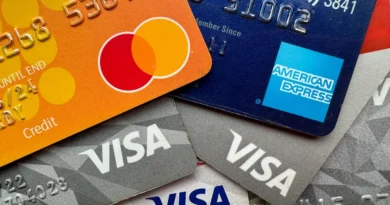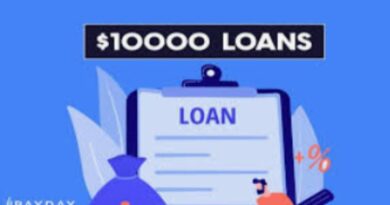The Relationship Between Interest Rates and Credit Loans
In today’s world, borrowing money has become a common practice for many individuals. Whether it’s for purchasing a home, funding education, or covering unexpected expenses, loans are often necessary to achieve various financial goals. When it comes to obtaining a loan, one of the fundamental decisions borrowers face is choosing between secured and unsecured credit loans. Both options have their pros and cons, and understanding the differences between them is essential for making an informed decision. In this article, we’ll explore the characteristics of secured and unsecured 신용대출 and delve into which option might be the right fit for your financial needs.
Understanding Secured Credit Loans:
Secured credit loans are backed by collateral, which serves as security for the lender in case the borrower defaults on the loan. Collateral can be any valuable asset owned by the borrower, such as a home, car, or savings account. Because the lender has a tangible asset to recoup their losses in the event of default, secured loans generally carry lower interest rates compared to unsecured loans. Additionally, secured loans typically offer higher borrowing limits and longer repayment terms, making them an attractive option for individuals with substantial assets and stable finances.
Advantages of Secured Credit Loans:
- Lower Interest Rates: Since secured loans are less risky for lenders, they often come with lower interest rates, resulting in lower overall borrowing costs for borrowers.
- Higher Borrowing Limits: With collateral to back the loan, lenders are more willing to extend higher loan amounts to borrowers, allowing them to access more substantial funds for their financial needs.
- Longer Repayment Terms: Secured loans usually offer longer repayment periods, giving borrowers more time to repay the borrowed amount in manageable installments.
- Easier Approval: Because the lender’s risk is minimized with collateral, secured loans are generally easier to qualify for, making them accessible to individuals with less-than-perfect credit histories.
Disadvantages of Secured Credit Loans:
- Risk of Losing Collateral: The primary downside of secured loans is the risk of losing the collateral pledged to secure the loan in case of default. This could result in the loss of valuable assets, such as a home or car, which can have long-term financial consequences.
- Lengthy Application Process: Secured loans often involve a more extensive application and approval process compared to unsecured loans, as lenders need to assess the value and condition of the collateral.
Understanding Unsecured Credit Loans:
Unsecured credit loans, on the other hand, do not require collateral and are based solely on the borrower’s creditworthiness and income. These loans are granted based on the borrower’s promise to repay the borrowed amount according to the terms of the loan agreement. Because unsecured loans pose a higher risk to lenders, they typically come with higher interest rates and stricter eligibility criteria.
Advantages of Unsecured Credit Loans:
- No Collateral Required: Unlike secured loans, unsecured loans do not require collateral, eliminating the risk of losing valuable assets in case of default.
- Quick Approval Process: Since there is no need for collateral evaluation, unsecured loans often have a faster application and approval process, allowing borrowers to access funds quickly when needed.
- No Risk to Assets: Borrowers don’t have to worry about losing their assets if they default on the loan, making unsecured loans a less risky option for individuals who are hesitant to pledge collateral.
- Flexibility: Unsecured loans offer borrowers more flexibility in how they use the borrowed funds, as there are typically no restrictions on how the money is spent.
Disadvantages of Unsecured Credit Loans:
- Higher Interest Rates: Because 대출 are not backed by collateral, lenders charge higher interest rates to compensate for the increased risk of default, resulting in higher borrowing costs for borrowers.
- Lower Borrowing Limits: Without collateral to secure the loan, lenders may limit the amount that can be borrowed through unsecured loans, making them less suitable for individuals needing larger sums of money.
- Stricter Eligibility Criteria: Since unsecured loans rely solely on the borrower’s creditworthiness, lenders often impose stricter eligibility criteria, including higher credit score requirements and income verification.
Choosing the Right Option for You:
When deciding between secured and unsecured credit loans, it’s essential to consider your individual financial situation, borrowing needs, and risk tolerance. Here are some factors to consider when making your decision:
- Financial Stability: If you have valuable assets that you’re willing to use as collateral and are confident in your ability to repay the loan, a secured loan might be a suitable option, offering lower interest rates and higher borrowing limits.
- Risk Tolerance: If you’re uncomfortable pledging collateral or concerned about the possibility of losing valuable assets in case of default, an unsecured loan might be a better choice, despite the higher interest rates.
- Borrowing Needs: Consider the amount of money you need to borrow and whether a secured or unsecured loan can meet your borrowing requirements. Secured loans are typically more suitable for larger loan amounts, while unsecured loans may be sufficient for smaller financial needs.
- Credit History: Your credit history plays a significant role in determining your eligibility for both secured and unsecured loans. If you have a strong credit history and a stable income, you may qualify for lower interest rates and better terms on both types of loans.
- Repayment Ability: Carefully evaluate your ability to repay the loan according to the agreed-upon terms. Factor in your current financial obligations, income stability, and any potential changes in your financial situation that may affect your ability to make timely loan payments.
Conclusion:
Secured and unsecured credit loans offer distinct advantages and disadvantages, and the right choice depends on your individual financial circumstances and preferences. By understanding the differences between these two types of loans and carefully evaluating your borrowing needs and risk tolerance, you can make an informed decision that aligns with your financial goals and objectives. Whether you opt for a secured loan with lower interest rates and higher borrowing limits or an unsecured loan with no collateral requirements and quicker approval process, it’s essential to borrow responsibly and ensure that you can comfortably manage your loan obligations to achieve long-term financial stability and success.



